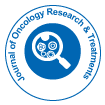Systematic Review on the Trends in Breast and Cervical Cancer in India, Especially in North East India
Received Date: Sep 07, 2023 / Published Date: Jan 11, 2025
Abstract
Background: Every country's leading cause of mortality is cancer, which also poses a significant obstacle to raising life expectancy. In nations like India, it is the top cause of mortality, with high rates in the north-eastern regions. Therefore, economic growth has resulted in rising cancer costs, which have caused financial hardship and higher mortality rates.
Objective: In order to provide helpful insights for developing countries and emerging nations, this article analyses India's cancer prevalence trends, survival rates, and treatment regimens for breast and cervical cancer in North East India.
Method: This systematic review evaluates existing literature on breast and cervical cancer trends in India and North East India with an emphasis on citations and original research. Without using patient names or other direct connection, the review uses the PubMed and Google Scholar databases.
Results: In Southern India since 2003, Aizawl and Kamrup had the highest Age-standardized cancer incidence Rate (AAR) per 100,000 residents. Papumpare has the highest incidence among women. Mizoram's Aizawl district has the highest incidence rate (30.7%). Data from the HBCR show that loco regional spread is responsible for 60.0% of instances of cervical cancer and 57% of cases of female breast cancer. Early detection increased overall 5-years survival rates for breast and cervical cancers compared to late detection. According to statistics from South India, the average duration between self-detection of breast cancer symptoms and the first visit to a general practitioner is 60 days, with over 90 days being the usual in 38.7% of cases. The primary therapy for cervical cancer symptoms begins 123 days after the first symptoms.
Conclusion: There are high death rates and low survival rates as more than 70% of patients with advanced cancer seek diagnostic and therapeutic treatments. Cancer has an impact on families' day-to-day operations, financial stability, stigma, and anxiety in LMICs like India. It is absolutely necessary to expand cancer care facilities in urban and rural regions in order to close the gap.
Keywords: Carcinoma; Cancer; Ultrasonography; Chemotherapy; Vaccination
Citation: Thomas TK, Basnet N, Kumar ChS, Nath A, Chettri R, et al. (2025) Systematic Review on the Trends in Breast and Cervical Cancer in India, Especially in North East India. J Oncol Res Treat 10: 308.
Copyright: © 2025 Thomas, et al. This is an open-access article distributed under the terms of the Creative Commons Attribution License, which permits unrestricted use, distribution and reproduction in any medium, provided the original author and source are credited.
Select your language of interest to view the total content in your interested language
Share This Article
Open Access Journals
Article Usage
- Total views: 1523
- [From(publication date): 0-0 - Dec 10, 2025]
- Breakdown by view type
- HTML page views: 1352
- PDF downloads: 171
